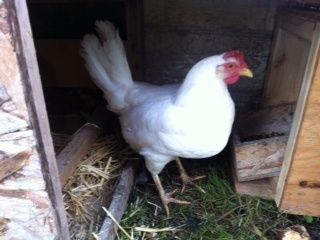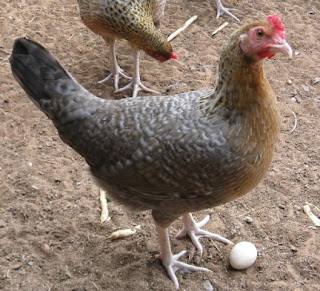- Apr 27, 2012
- 12
- 0
- 22
About two weeks ago a chicken showed up outside my property fence. When we let the "stranger" onto the property it found interest in our chicken, our flock was out free ranging. My husband told me that the stranger stuck his head into the run and my rooster Chuck, and the stranger chicken were fighting thru the fence. My rooster is a 3yr old RIR and he got some decent pecks on his comb but nothing crazy. We decided that stranger was probably from our neighbors and we sent him on his way, cause we couldn't catch him. About a week later stranger keep showing up by our fence..... Long story short, he's been living in our blackberry bushes for this whole time. We ended up catching him and the neighbors around us have not claimed him, so now the chicken is living in an old chicken run we have and I need to find him a new home for it! I have no clue to what breed,age or sex of the chicken.... On one leg looks like a 1.5in spur but nothing on the other leg. It hasn't tried to crow and I haven't found an egg....the feathers look primarily rounded but it has fairly long tall feathers, at first the stranger was scared and didn't want you to get close to hi, at all but over the past few days, stranger will walk right around you, and doesn't freak out if you try and touch him, I'm kinda lost! Please help.





